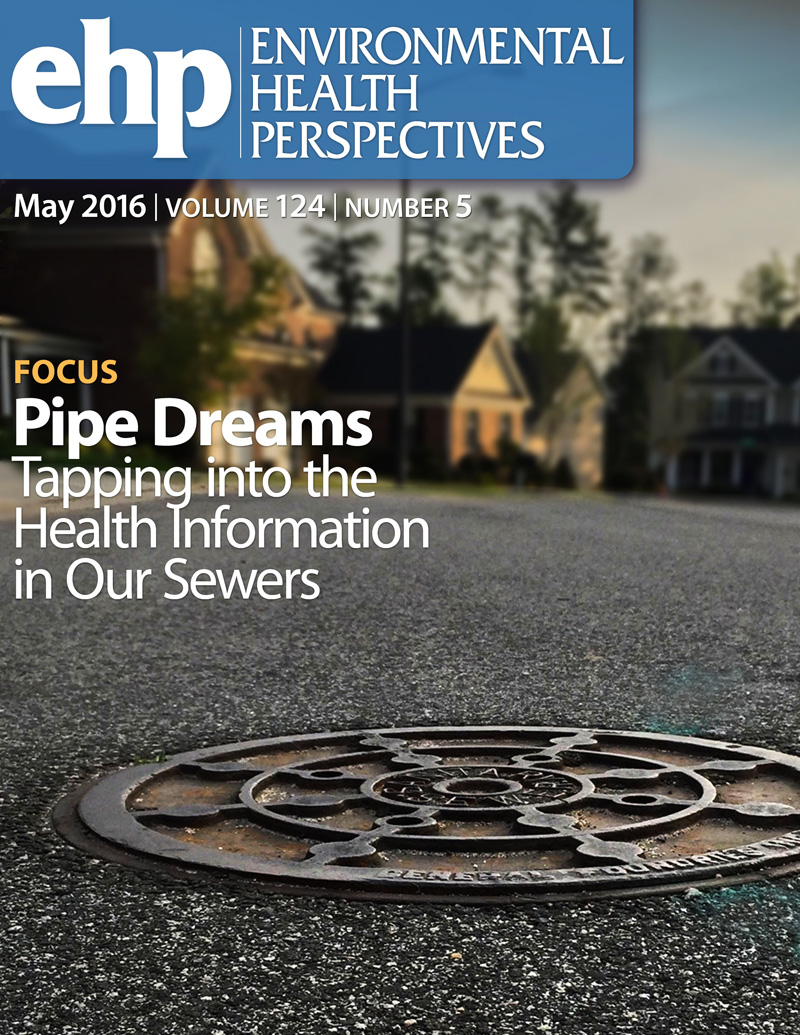多重环境暴露与广泛性焦虑障碍症状之间的关系:美国一项前瞻性队列研究
IF 9.8
1区 环境科学与生态学
Q1 ENVIRONMENTAL SCIENCES
引用次数: 0
摘要
背景:越来越多的证据表明,建筑和自然环境暴露与焦虑症状的病因和恶化有关。目的:我们的目的是评估社区社会经济地位(nSES)、可步行性、绿化、细颗粒物(PM2.5)、二氧化氮(NO2)、温度与广泛性焦虑障碍(GAD)症状之间的个体和联合关系。方法纳入护士健康研究II的81897名参与者。2013年和2017年使用7项广泛性焦虑障碍量表(GAD-7)测量GAD症状。可步行性和nSES z分数在人口普查区水平上计算。利用归一化植被指数(NDVI)在270m和1230m缓冲尺度下的夏季和年平均绿度,并利用时空模型预测PM2.5、NO2和温度的1个月、3个月和12个月平均值。纵向logistic和广义估计方程(GEE)模型估计临床相关GAD症状的优势比和95%置信区间(GAD-7≥5分)。采用nSES、夏季NDVI (1230m)和协变量进行评价。我们采用分位数g计算来更直接地评估环境暴露混合物与广泛性焦虑症症状之间的关系。结果在单一暴露模型中,夏季NDVI(例如,1230m, OR: 0.96, 95% CI: 0.94, 0.98)、NO2(例如,12个月平均NO2, OR: 1.03, 95% CI: 1.01, 1.04)、12个月平均温度(OR: 1.05, 95% CI: 1.03, 1.07)和步行能力(OR: 1.02, 95% CI: 1.01, 1.03)与广泛性焦虑症症状相关。在联合暴露模型中,nSES (OR: 0.96, 95% CI: 0.95, 0.98)和夏季NDVI相关(OR: 0.92, 95% CI: 0.88, 0.96);其他所有关联都减弱了。nSES对夏季NDVI (1230m)、温度和NO2的相关性进行了修正,在社会经济贫困地区的相关性更强。在这一人群中,较高水平的夏季绿化和nSES可能与广泛性焦虑症症状具有保护作用,而中长期二氧化氮暴露、长期温度和步行性与广泛性焦虑症症状相反。社会经济落后的地区可能会承受额外的风险。分位数g计算分析的结果表明,环境暴露可能与广泛性焦虑症症状相互拮抗。https://doi.org/10.1289/EHP14458。本文章由计算机程序翻译,如有差异,请以英文原文为准。
The association between multiple environmental exposures and symptoms of generalized anxiety disorder in a prospective, U.S.-based cohort study.
BACKGROUND
Emerging evidence has implicated built and natural environmental exposures in the etiology and exacerbation of anxiety symptoms.
OBJECTIVES
Our objective was to assess individual and joint associations between neighborhood socioeconomic status (nSES), walkability, greenness, fine particulate matter (PM2.5), nitrogen dioxide (NO2), and temperature and generalized anxiety disorder (GAD) symptoms.
METHODS
We included 81,897 participants of the Nurses' Health Study II. GAD symptoms were measured in 2013 and 2017 using the 7-item Generalized Anxiety Disorder scale (GAD-7). Walkability and nSES z-scores were calculated at the Census tract level. Normalized Difference Vegetation Index (NDVI) summer and annual average greenness at 270m and 1230m buffer sizes, and spatiotemporal models predicted one-, three-, and twelve-month averages of PM2.5, NO2, and temperature were calculated at the residence. Longitudinal logistic and generalized estimating equations (GEE) models estimated odds ratios and 95% confidence intervals for clinically relevant GAD symptoms (GAD-7 ≥ 5 points). We assessed effect modification by nSES, summer NDVI (1230m), and select covariates. We employed quantile g-computation to more directly assess the association between environmental exposure mixtures and GAD symptoms.
RESULTS
In single exposure models, summer NDVI (e.g., for 1230m, OR: 0.96, 95% CI: 0.94, 0.98), NO2 (e.g., for twelve-month average NO2, OR: 1.03, 95% CI: 1.01, 1.04), twelve-month average temperature (OR: 1.05, 95% CI: 1.03, 1.07, and walkability (OR: 1.02, 95% CI: 1.01, 1.03) were associated with GAD symptoms. In the joint exposure model, nSES (OR: 0.96, 95% CI: 0.95, 0.98) and summer NDVI were associated (OR: 0.92, 95% CI: 0.88, 0.96); all other associations were attenuated. Associations with summer NDVI (1230m), temperature, and NO2 were modified by nSES, with stronger associations in socioeconomically deprived areas.
DISCUSSION
In this population, higher levels of summer greenness and nSES may be protectively associated with GAD symptoms, while medium- and long-term NO2 exposure, long-term temperature, and walkability are adversely associated with GAD symptoms. Socioeconomically deprived areas may bear additional risks. The results of the quantile g-computation analysis suggest that environmental exposures may act antagonistically with one another in relation to GAD symptoms. https://doi.org/10.1289/EHP14458.
求助全文
通过发布文献求助,成功后即可免费获取论文全文。
去求助
来源期刊

Environmental Health Perspectives
环境科学-公共卫生、环境卫生与职业卫生
CiteScore
14.40
自引率
2.90%
发文量
388
审稿时长
6 months
期刊介绍:
Environmental Health Perspectives (EHP) is a monthly peer-reviewed journal supported by the National Institute of Environmental Health Sciences, part of the National Institutes of Health under the U.S. Department of Health and Human Services. Its mission is to facilitate discussions on the connections between the environment and human health by publishing top-notch research and news. EHP ranks third in Public, Environmental, and Occupational Health, fourth in Toxicology, and fifth in Environmental Sciences.
 求助内容:
求助内容: 应助结果提醒方式:
应助结果提醒方式:


